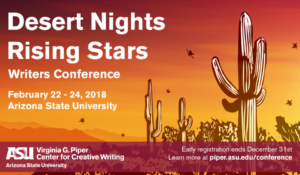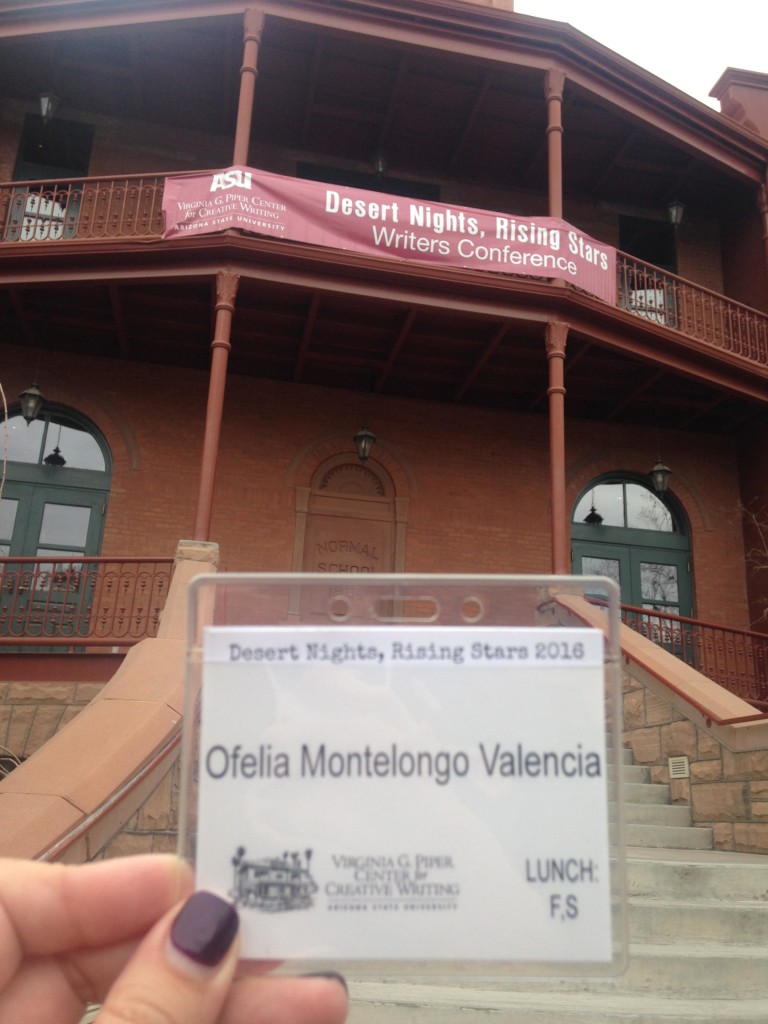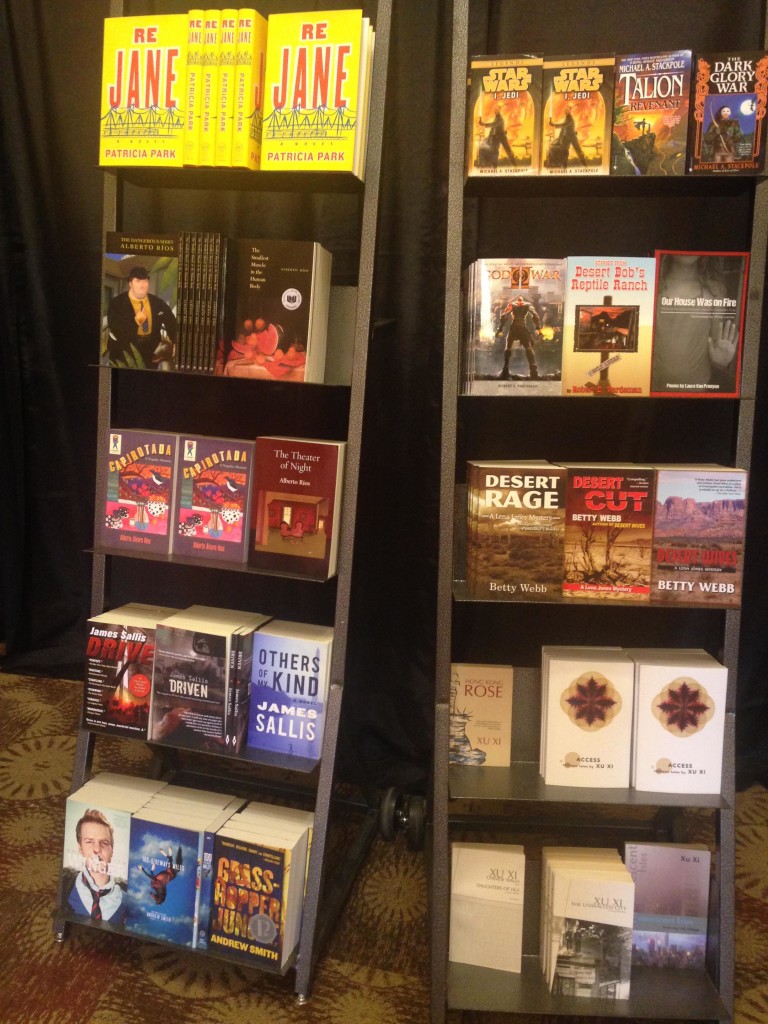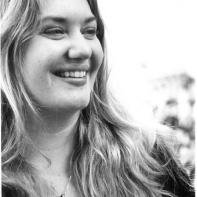On Workshops: An Exercise in Character
 There’s nothing like the first day of class. Coffee, notebooks, and laptops are strewn around the table. The awkwardness of either small talk or silence permeates the room. As the seats fill, the energy is palpable, and the student body seems to carry with it a collective question. What are you about to make us do?
There’s nothing like the first day of class. Coffee, notebooks, and laptops are strewn around the table. The awkwardness of either small talk or silence permeates the room. As the seats fill, the energy is palpable, and the student body seems to carry with it a collective question. What are you about to make us do?
I teach short fiction, often in workshops settings, and though I vary my lesson plans considerably, there is one outline I return to no matter the age or skill level because it is fundamental to fiction writing. This lesson is on characterization, the only lesson I have that is, if not fixed, consistent.
When getting to know a new class, I ask for names, where students are from, how they like to spend free time, their favorite book or movie, and what led them to my class. Sometimes I throw in silly questions, such as how they’d spend a million dollars in three days or who they’d interview first if they had a talk show and could have anyone living or dead on as a guest. In other words, I cover the who, what, when, where, and why to get to know them.
To introduce students to characterization is to introduce them, in part, to all aspects of short-form storytelling. For this reason, I follow introductions by asking my students to answer the first four intro questions for a fictional character as well—preferably a brand-new character. If the more far-reaching question was posed, I ask them to answer that, too.
There is rarely a lot of struggle with this exercise. Characterization is a natural thing. We have so many personal experiences and interactions to draw from that we can often come up with a character by asking ourselves a few simple questions. In fact, if you’re reading this, try it. It’ll only take a few minutes.
- Name:
- Place of origin:
- Favorite past-time:
- Favorite book or movie:
Think of characterization in a similar manner to how we get to know people. When we first meet a person, we only have appearance to go by, and it’s easy to deduce a thing or two from body language. In conversation, more information is gathered. The more we see a person and interact, the more data we have at hand to create a portrait in our minds.
Examining fabricated characters at this point, after only a few questions, it would seem they are mere acquaintances. We need to know more, so here are a few more questions:
- What does this character want more than anything?
- What’s in the way?
- Greatest fear?
- Does the character have a favorite color? Favorite food? A quirky habit?
Depending on the length of the workshop, we continue:
- Would you date your character?
- Would you be friends?
After adding to our list of questions and answers, a character begins to take shape, and at this early point in the workshop, I tell the class it’s time to share. When we go around the room, the magic begins to take shape. Suddenly, the number of people in the room has doubled. A fresh energy takes over as these quirky new people (usually people) are introduced.
Characters inevitably reflect aspects of either ourselves, people we know, characters from our dreams, and/or fictional characters we’ve been inspired by. We’re processing information day by day, so whether we’re conscious of it or not, all information shapes the way we think and perceive the world as artists. This is never more evident than in spontaneous creative efforts.
Because characters are often a collage of previous interactions, questions about human behavior, dreams, hopes, worries, and joys, they may even lead us to corners of our mind that are strange or uncomfortable. “How did I come up with this disturbing person?” a student might ask. Sometimes a disclaimer will be made: “Just so you know, my writing is not usually so dark.” Or, “I don’t like this person at all. He’s nothing like me.”
Characters, when made up on the spot, are not a reflection of us so much as a reflection of what’s been on our mind, what we know, and what we’d like to know. And in every case, they reflect passions and fears.
That’s not to say that if a student writes a serial killer character, that student is a serial killer. What it does mean is that if we write a serial killer character, that character will likely have some humanizing trait that we share, or reflect a fear we have about the world.
*
Writing is a way to reframe reality by exploring our emotions through characterization and action, through pure creative output, which, ideally, distills all the information we have and carries with us into potent little worlds that seem both unfamiliar and not.
For the writing-intensive portion of class, I challenge my students to explore their characters by writing a scene in which their protagonists almost get what they so desperately want. This writing assignment is about plot through characterization. It is the heart of the story. It is also important to set a limit on the time they have to write, so I’ll often give them 20 minutes. Knowing a timer is ticking, we tend to find ways to work more words onto the page.
*
As we conclude, I challenge my students (and anyone reading this) to live like writers, to observe the world like writers, to take notes and take stock. Feel fully that thick, humid breeze or hear the birdsong during morning walks—hear what is always there but you never pay attention to.
Carry a notebook. When you come up with a beautiful line, a new insight, a new observation, or just pure guttural emotion, write it down as soon as you can. Explore it on the page. And through all your observing and listening, keep your new character in the back of your mind.
As you live, this character solidifies. And as you continue to write, I suggest creating a few more and traveling with them, too, examining the world through multiple sets of eyes, and writing when so moved to do so. In this way, characters become vehicles by which to study the world. They can return in different scenarios or deliver a single message and move on.
The more I write, the more likely it is I’ll see a character return, only with each story she becomes stronger, more defined. Sometimes characters from different stories end up meeting in a narrative some months or years down the line. Sometimes, they fizzle out. But when we know our characters, really know them, our writing feels less like work and more like opportunity, a journey.
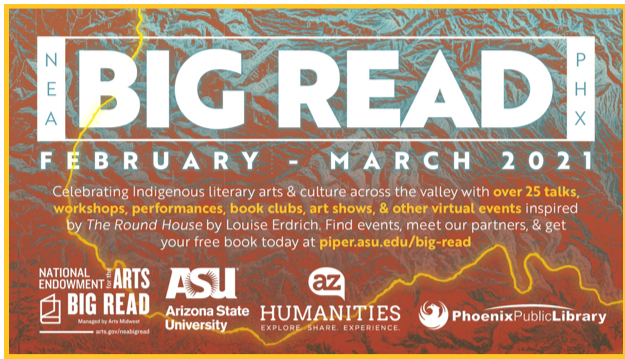
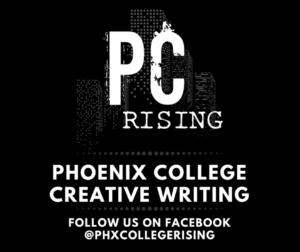 Phoenix College is launching its’ new Creative Writing Facebook page: PC Rising. They want to connect students, professors, and alumni with other writers from the downtown Phoenix area. Follow them @PhxCollegeRising for more information about their students, publications, and upcoming workshops!
Phoenix College is launching its’ new Creative Writing Facebook page: PC Rising. They want to connect students, professors, and alumni with other writers from the downtown Phoenix area. Follow them @PhxCollegeRising for more information about their students, publications, and upcoming workshops!